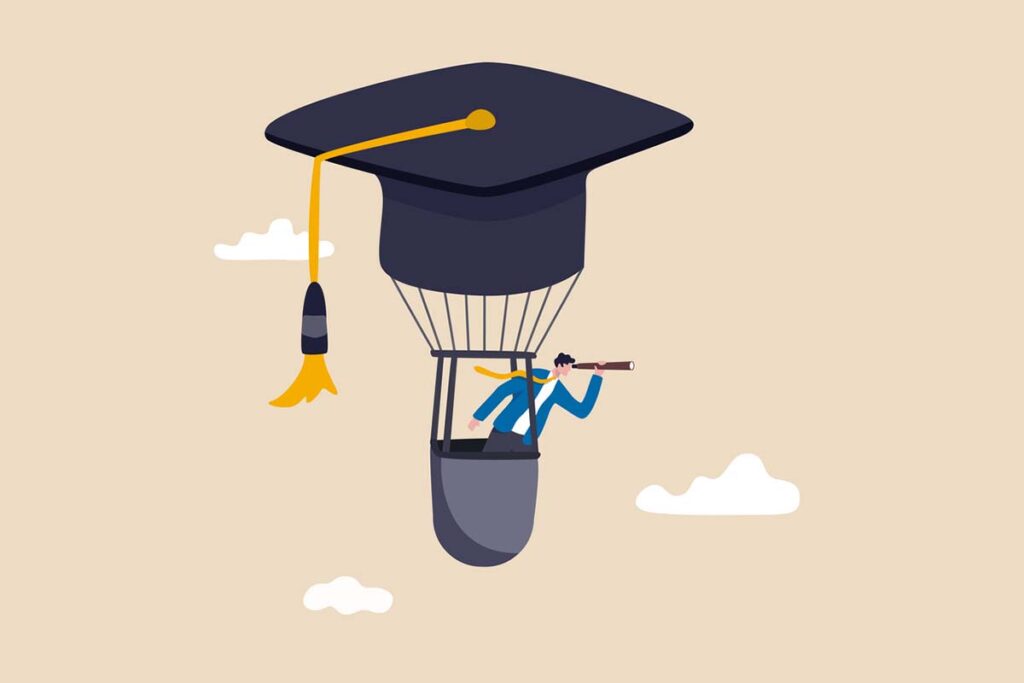Summary: Prepare strategies to anticipate and address future learner needs in education today.
Understanding Emerging Trends
The social platform formerly known as Twitter—now X—is the place to be when understanding future trends, especially in learning. As a small example, Stanford University recently held a hackathon in which Ivy League students competed for a $200,000 grand prize. One entrant created an Augmented Reality (AR) headset that helps wearers fix their cars based on AI-assisted articles and videos.
Developing new learning strategies in this brave new world requires anticipating learner needs. What do they need? How can we build and personalize that just for them?
There is an increasing focus on personalized learning experiences tailored to individual needs developing. Incorporating data analysis enables educators to customize content that adapts to each learner’s pace and interest, which fosters improved engagement.
Moreover, integrating technology continues to reshape learning environments. Virtual Reality (VR) and Augmented Reality (AR) provide immersive experiences, making complex subjects more accessible and engaging. As technology becomes more cost-effective, it is likely to be a staple in modern curricula. For instance, AR can transform a static history lesson into an interactive exploration of ancient civilizations.
Further, the rise of remote and hybrid learning models demands adaptive strategies. Educational institutions need robust digital infrastructure to ensure uninterrupted learning. This includes reliable internet connectivity, accessible online platforms, and comprehensive training for educators to utilize digital tools effectively.
Innovations in mobile learning are also noteworthy. Smartphones and tablets offer the flexibility for learning on the go, ensuring continuity in various settings. Apps designed for educational purposes can facilitate self-paced learning, providing learners with resources anytime, anywhere.
Emphasizing Skills for the Future
The workforce of tomorrow will require skills beyond traditional academic knowledge. Critical thinking, creativity, and emotional intelligence are becoming as essential as literacy and numeracy. Educational programs must evolve to include courses that foster these skills from early stages. Project-based learning (PBL) is a compelling approach, encouraging students to solve real-world problems using interdisciplinary knowledge, thereby nurturing these competencies.
Furthermore, programming and digital literacy are rapidly becoming non-negotiable in many industries. Initiatives to integrate coding and digital skills across various subjects can better prepare students for technology-driven workplaces. For example, incorporating basic programming in math and science classes can demystify technological concepts and increase student confidence in navigating digital tools.
To address the disparity in skill development, institutions should also prioritize inclusive programs that cater to diverse learning needs. Empowering all learners ensures no one is left behind in this digital age.
Investing in STEM education from an early age sets a foundation for future innovators. Collaborative projects designed to simulate professional environments can bridge the gap between theoretical knowledge and real-world application. This hands-on experience fosters problem-solving skills and teamwork, crucial for any career path.
The Role of Continuous Feedback and Analytics
Continuous feedback mechanisms are pivotal in modern educational frameworks. Learner analytics can track progress, identify skill gaps, and provide actionable insights to tailor educational strategies. Real-time feedback tools enable students to receive personalized suggestions, helping them stay on track and meet learning objectives.
Implementing AI-driven platforms can facilitate predictive analytics to anticipate future learning needs. By analyzing patterns and outcomes, these platforms can suggest content adjustments or highlight potential challenges learners may encounter. Institutions that effectively leverage analytics tools will likely lead in providing transformative educational experiences.
Moreover, fostering a culture of open communication between students and educators can enhance learning outcomes. Regular, constructive feedback encourages a growth mindset, allowing learners to see mistakes as opportunities for improvement rather than failures.
Educational institutions must also focus on data privacy and ethical considerations when employing these analytics. Transparency in how data is collected and used can build trust among students and parents, ensuring that these tools enhance the learning experience without compromising personal information.
Creating Equitable Learning Opportunities
Equity in education must remain a priority as we design for the future. Access to technology and resources can vary greatly among different communities, creating disparities in educational outcomes. Bridging this gap requires a strategic approach, involving public and private partnerships to fund technology access in underserved areas swiftly.
Community engagement initiatives can also play a vital role. Collaborating with local organizations helps identify specific community needs, allowing for more targeted support. By involving local voices in policy-making, educational strategies can become more inclusive and relevant to the learners they serve.
Inclusive curricula that celebrate diversity and promote cultural competency are essential. This approach not only enriches the learning experience but also prepares students to thrive in a globalized world. Encouraging multilingual education and offering diverse perspectives within course content can foster a more comprehensive and empathetic understanding of the world.
Conclusion
To remain relevant, educational institutions must proactively adapt to emerging trends and future needs. By embracing technology, prioritizing skill development, and utilizing data insights, educators can create dynamic learning environments that empower learners to thrive in an ever-changing world. The future of education depends on our commitment to innovative, inclusive, and personalized learning approaches.

